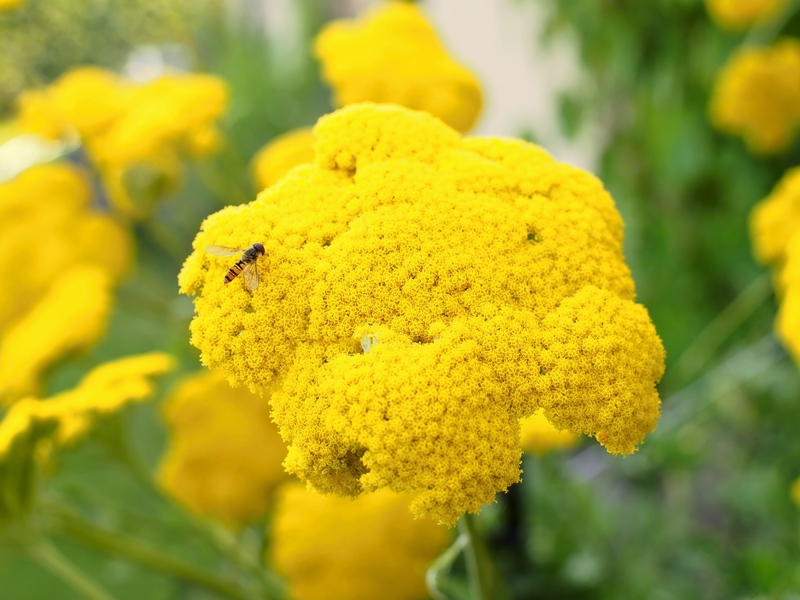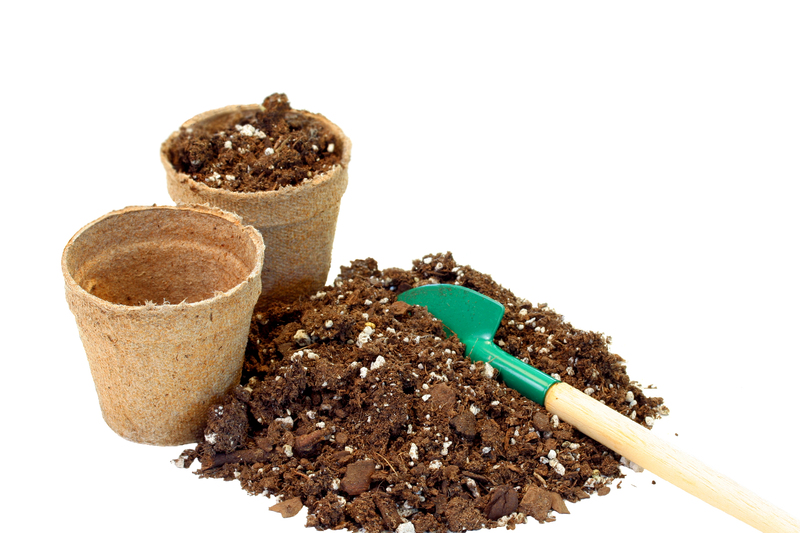Winter Gardening Mastery: Effective Strategies to Safeguard Plants
Posted on 29/06/2025
Winter Gardening Mastery: Effective Strategies to Safeguard Plants
Winter gardening presents unique challenges and rewarding opportunities for gardening enthusiasts. As temperatures plummet and daylight dwindles, protecting your cherished plants becomes paramount. This comprehensive guide explores winter gardening mastery, offering well-tested strategies to safeguard plants, boost their resilience, and ensure they flourish even during the harshest months.
Understanding the Impact of Winter on Gardens
Before undertaking protective measures, it is crucial to grasp how winter affects different plant varieties. Extreme cold, frost, wind, snow, and reduced sunlight can weaken or even kill unprotected plants. Some species enter dormancy, while others remain active and require ongoing care.
- Perennials: Usually go dormant but can suffer from root damage if the soil freezes and thaws repeatedly.
- Annuals: Often fail to survive unless special shelter is provided.
- Evergreens: Remain active, continuing to lose water, risking dehydration known as "winter burn."
- Container Plants: More susceptible to temperature swings and root freezing.

Comprehensive Strategies to Protect Your Plants This Winter
1. Choose the Right Plants for Winter Gardening
One of the key elements of winter gardening mastery is thoughtful plant selection. Opt for species and cultivars known for their cold hardiness, such as:
- Winter pansies
- Ornamental cabbage and kale
- Holly and boxwood
- Winterberry
2. Mulching: Nature's Blanket
Mulching is a foundational winter plant protection technique. A 2-4 inch layer of organic mulch--such as shredded leaves, straw, or bark--insulates roots, moderates soil temperature, and retains moisture.
- Apply mulch after the first hard frost to lock in soil warmth.
- Keep mulch away from trunks and crowns to prevent rot and rodent damage.
- Replenish mulch as needed through winter, especially after heavy snow or rain.
Tip: Mulching not only protects plants but also enriches the soil as it breaks down.
3. Row Covers and Cold Frames for Winter Gardening
For winter gardening involving edibles or tender ornamentals, physical barriers are invaluable. Fabrics like garden fleece, burlap, and row covers shield plants from wind and frost while allowing air and moisture exchange.
- Use lightweight row covers on crops like spinach, lettuce, and chard for harvests into winter.
- DIY cold frames made from old windows or clear plastic trap solar warmth and protect from the elements.
- Burlap wraps safeguard evergreens and shrubs prone to winter burn from wind and sunscald.
Cold frames offer not just protection but also a head start for spring planting, making them a key investment for any serious winter gardener.
4. Watering Wisely During Winter
A common misconception is that plants do not need water in winter. In fact, adequate hydration before and during winter is crucial for plant survival.
- Water deeply in late autumn so roots can store moisture before the ground freezes.
- Continue watering evergreens during dry spells, especially if temperatures are above freezing.
- Avoid waterlogging by ensuring good drainage--soggy roots are just as hazardous as drought.
Remember: Dry, windy weather can desiccate plants even in the cold. Monitoring soil moisture prevents winter dehydration.
5. Pruning: A Double-Edged Sword
Pruning can strengthen plants or expose them to more harm, depending on the timing and technique. In winter gardening, it's best to:
- Remove dead or diseased wood in late fall or during winter dormancy.
- Avoid heavy pruning on spring-blooming shrubs, as this cuts off next season's flower buds.
- Wait until late winter to prune fruit trees and roses, reducing infection risk and encouraging strong growth come spring.
Special Winter Plant Protection Techniques
Plant Wrapping and Shielding
Wrapping plants is vital for young trees, shrubs, and tender exotics.
- Wrap trunks with tree guards to protect from frost cracks and rodent gnawing.
- Bundle shrubs in burlap or horticultural fleece in exposed areas.
- Create windbreaks using screens or temporary fencing, especially for evergreens and newly planted specimens.
Plant shields and covers reduce the impact of wind chill and extreme temperature shifts.
Elevated Protection for Container Plants
Container gardening in winter raises special challenges, as potted plants are vulnerable to root freezing and rapid temperature fluctuations.
- Group containers together against a sheltered wall for warmth and wind protection.
- Elevate pots off the ground using bricks or pot feet for drainage.
- Wrap pots with insulation, such as bubble wrap, straw, or special pot jackets.
- Bring fragile containers indoors when severe freezes are predicted.
Utilizing Snow as Natural Insulation
Did you know that snow acts as an excellent insulator? Snow traps air, keeping soil temperature stable and roots protected.
- Do not remove snow from perennial beds--let it form a protective blanket.
- Gently brush heavy snow off branches to prevent breakage.
- Avoid using salt-based ice melters near plants, as salt damages roots and soil structure.
Managing Frost Heaving
Frost heaving occurs when soil freezes and thaws in cycles, pushing roots and crowns out of the ground.
- Maintain thick mulch layers into early spring when heaving is most likely.
- Re-firm soil around exposed roots after thaws, and add extra mulch as needed.
Winter Gardening for Edibles
Year-round harvest is possible with the right winter gardening strategies for vegetables.
Planting Cold-Hardy Vegetables
- Kale, collards, spinach, and chard often survive moderate frosts, even improving in flavor after a cold snap.
- Carrots, parsnips, and leeks can be left in the ground and harvested as needed throughout winter.
- Garlic and shallots thrive when planted in late fall, establishing roots before winter's chill.
Extending the Growing Season
Use unheated greenhouses, hoop houses, and cloches to shield crops from frost and snow.
- Rotate coverings on warm days for ventilation, preventing fungal diseases.
- Double up row covers for extra-sensitive crops during extreme cold spells.
Pro Tips for Advanced Winter Gardening Mastery
Soil Preparation and Health
- Test your soil in autumn to adjust pH and nutrients before winter arrives.
- Cover bare soil with green manure or cover crops to prevent erosion and enrich fertility for spring.
Monitoring and Adapting
- Check plants regularly for signs of stress, such as wilting or discoloration.
- Adapt your strategies based on local microclimates--wind exposure, sun patterns, and typical winter lows.
Pest and Disease Control
- Clean up fallen leaves and debris to eliminate overwintering sites for pests and pathogens.
- Use dormant oil sprays on fruit trees to control scales and mites safely.
- Set up barriers or traps for rodents searching for winter food sources.

Frequently Asked Questions About Winter Plant Protection
How can I minimize winter damage to delicate plants?
*Use insulating covers, position plants in protected microclimates, and mulch generously. If possible, overwinter extra-sensitive species indoors or in a greenhouse.*
When should I remove winter mulch?
*Wait until the threat of hard freezes passes in early spring, typically when new growth appears. Gradually remove mulch to avoid shocking emerging plants.*
Is it better to prune in fall or spring?
*Dead, diseased, or unsafe branches can be pruned anytime. For healthy growth, most trees and shrubs benefit from pruning in late winter or early spring before buds break.*
Should I fertilize plants in winter?
*Hold off on applying fertilizer until early spring unless dealing with winter vegetables under cover. Fertilizing too early can stimulate tender growth prone to frost damage.*
Conclusion: Mastering Winter Gardening for Year-Round Success
Achieving winter gardening mastery is about balancing proactive protection with an understanding of each plant's unique needs. By integrating effective strategies--such as thoughtful plant selection, strategic mulching, physical barriers, and wise watering--you can safeguard your garden's health and beauty throughout the coldest months.
With careful planning and the right techniques, your plants will not only survive but thrive, laying a foundation for bountiful springs and lush, resilient landscapes. Embrace winter as an essential season in your gardening journey, and watch your garden reward you with vitality year after year.
- Plan your protective measures each fall to stay ahead of winter's challenges.
- Monitor weather trends and adapt your strategy accordingly.
- Continue learning new tactics for winter plant care to achieve true gardening mastery.
For in-depth advice and inspiration, consider seeking out local gardening clubs or master gardener programs. With dedication and these winter plant protection techniques, your garden can become a beacon of greenery and life--even through the depths of winter.

